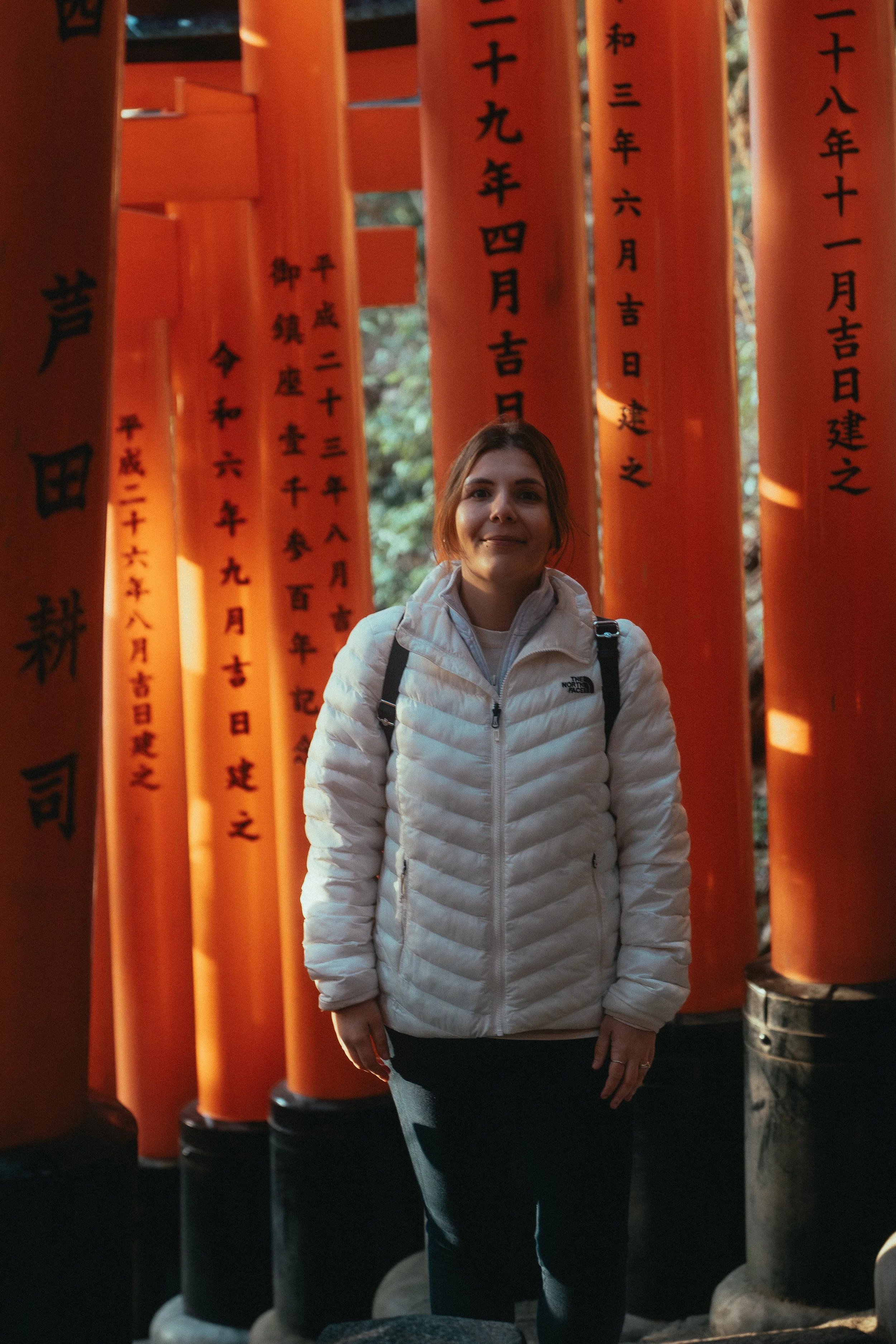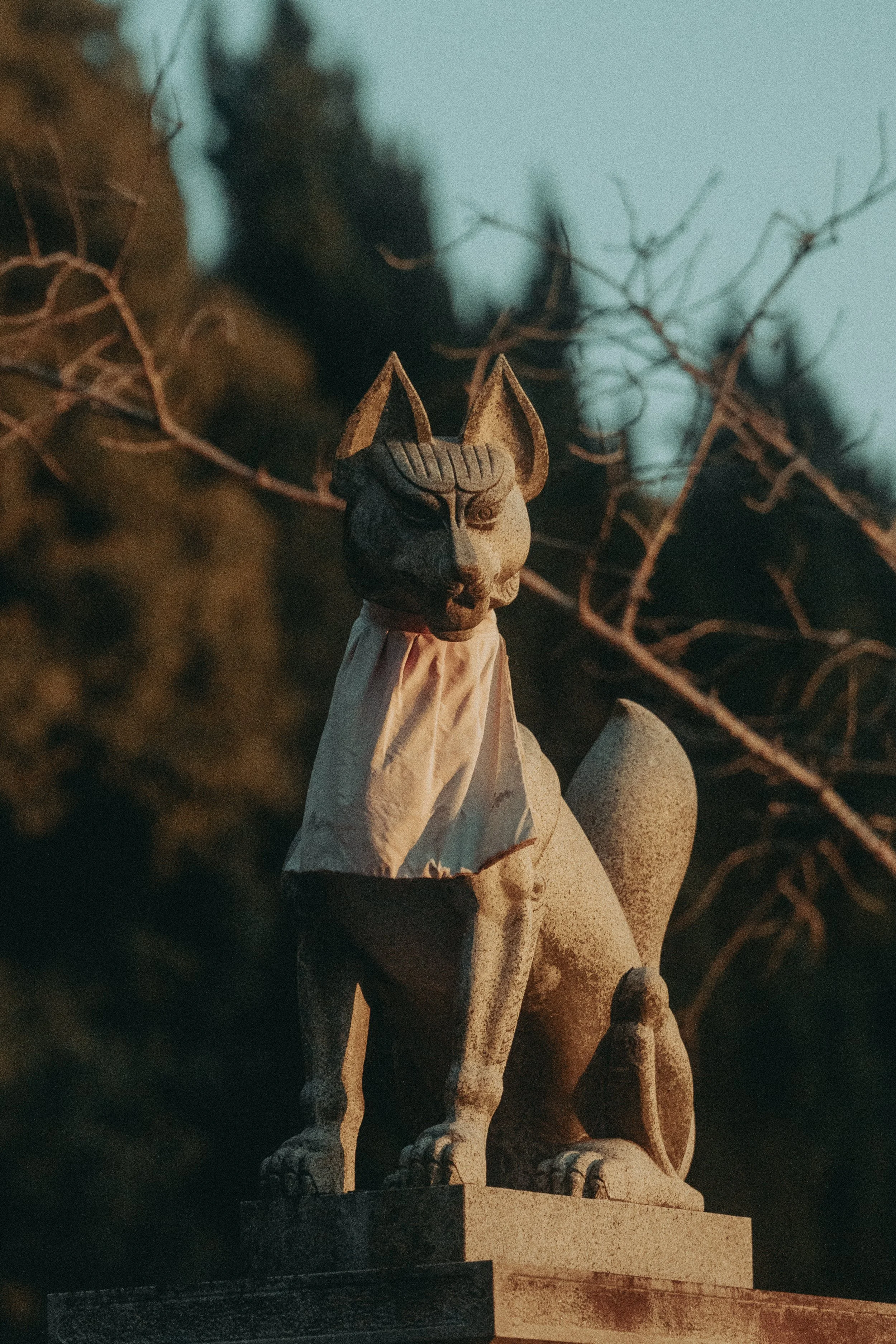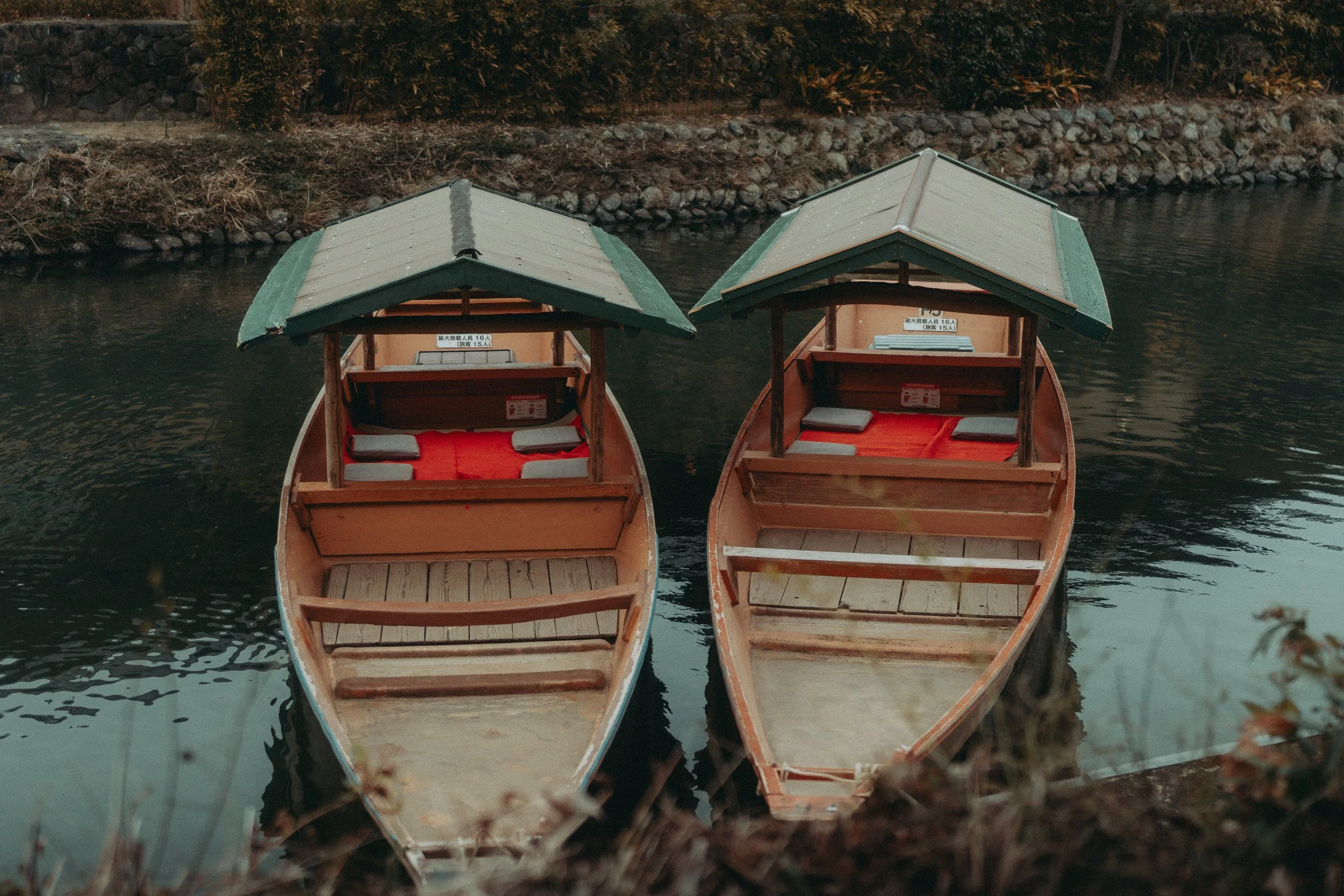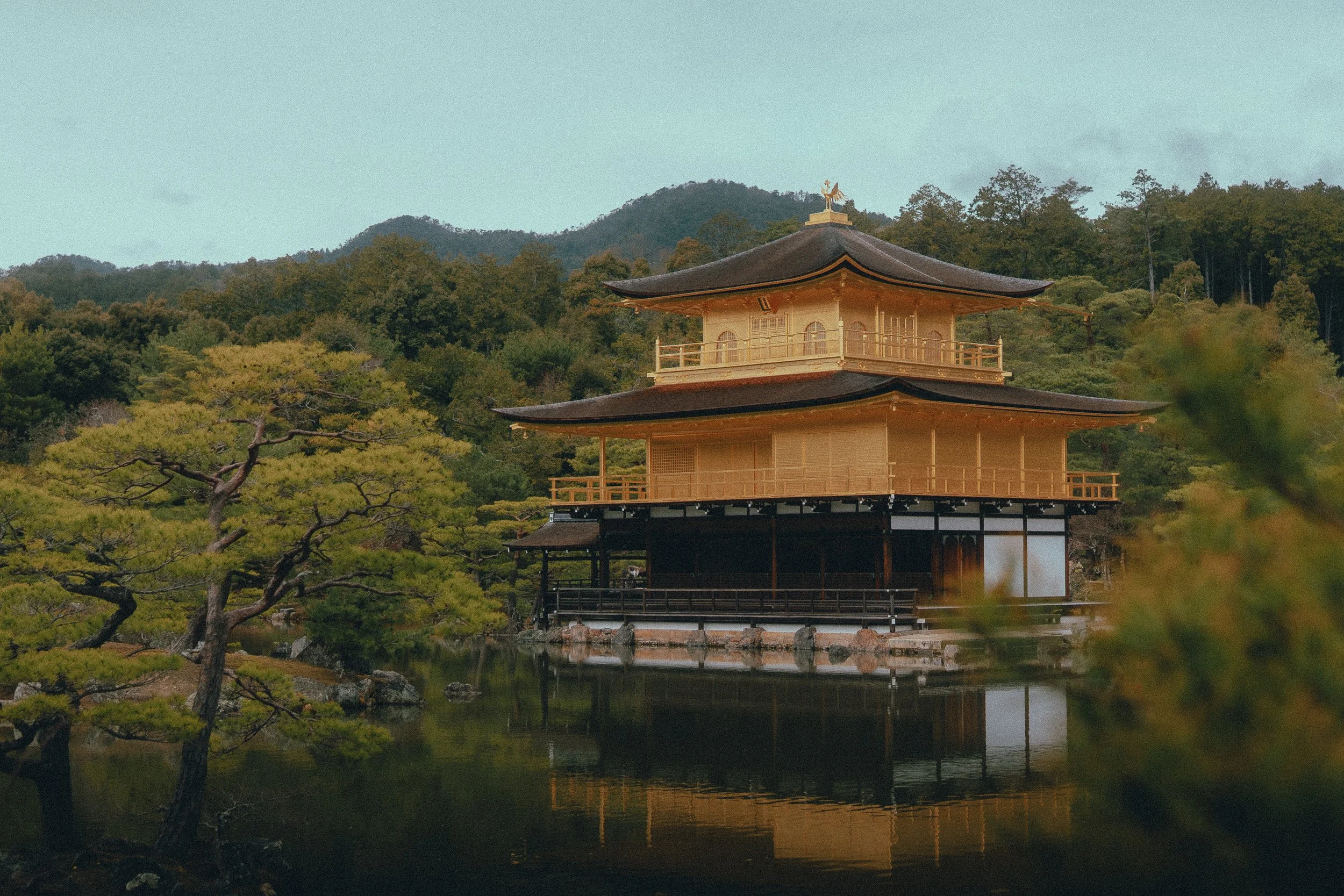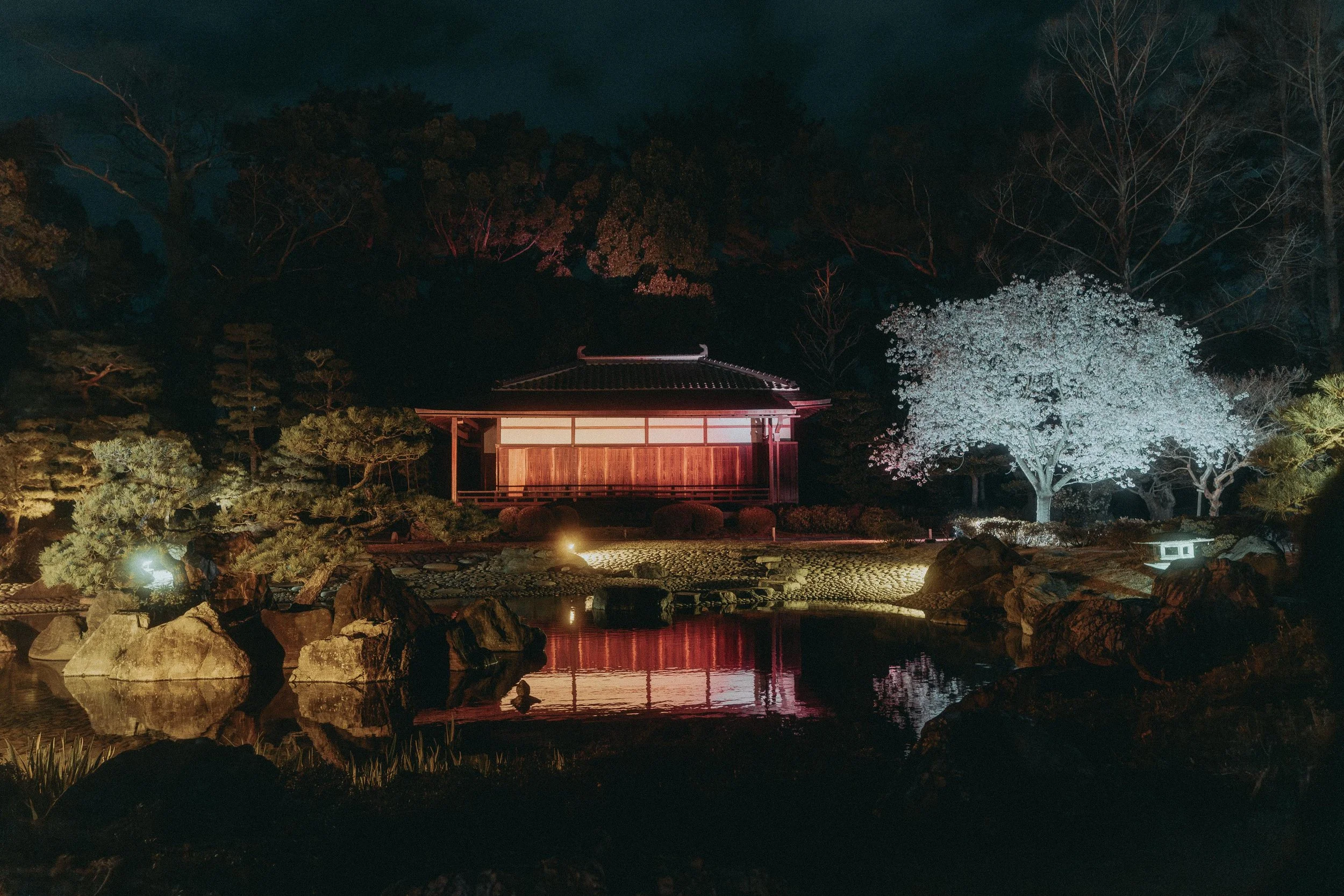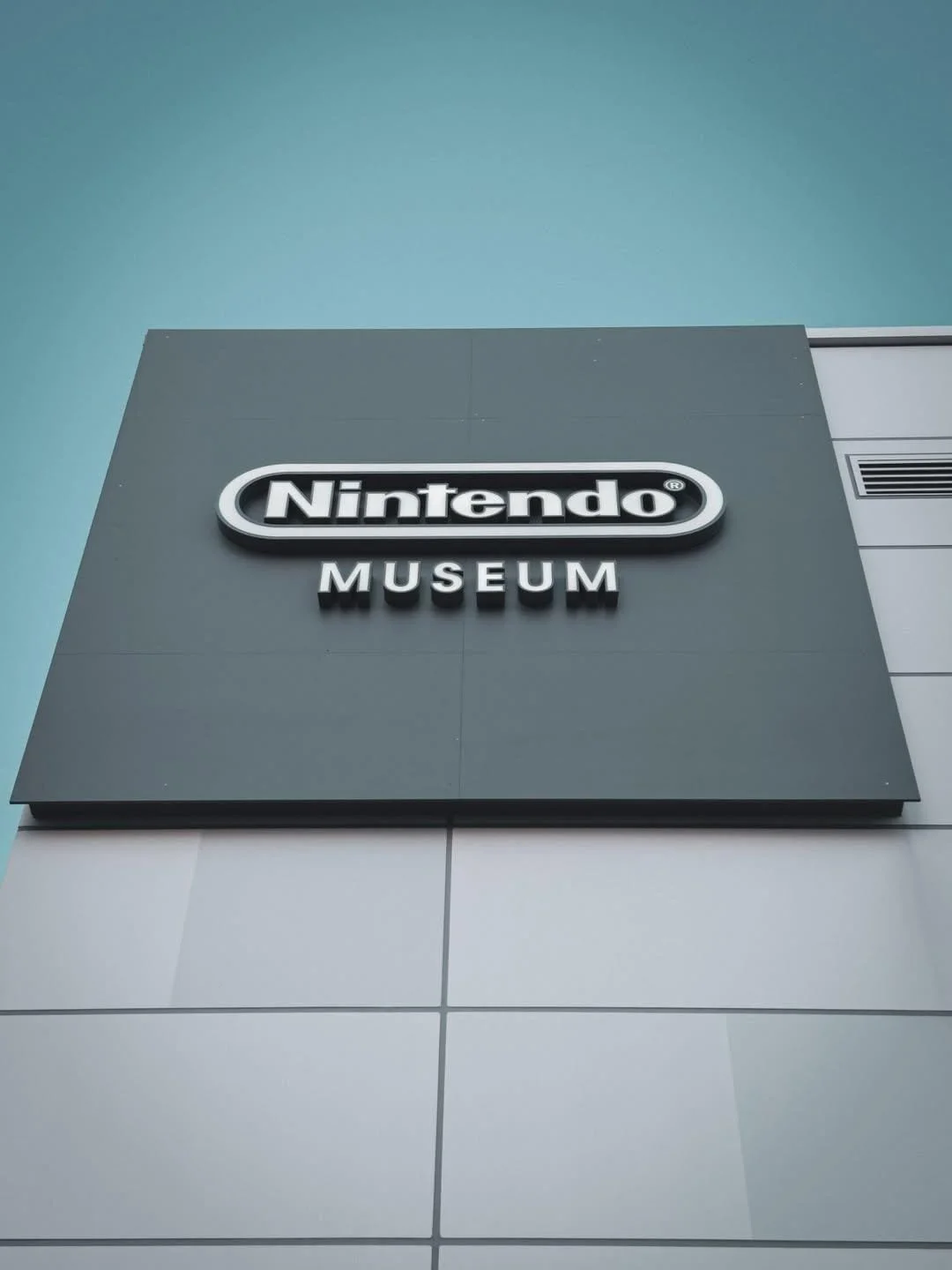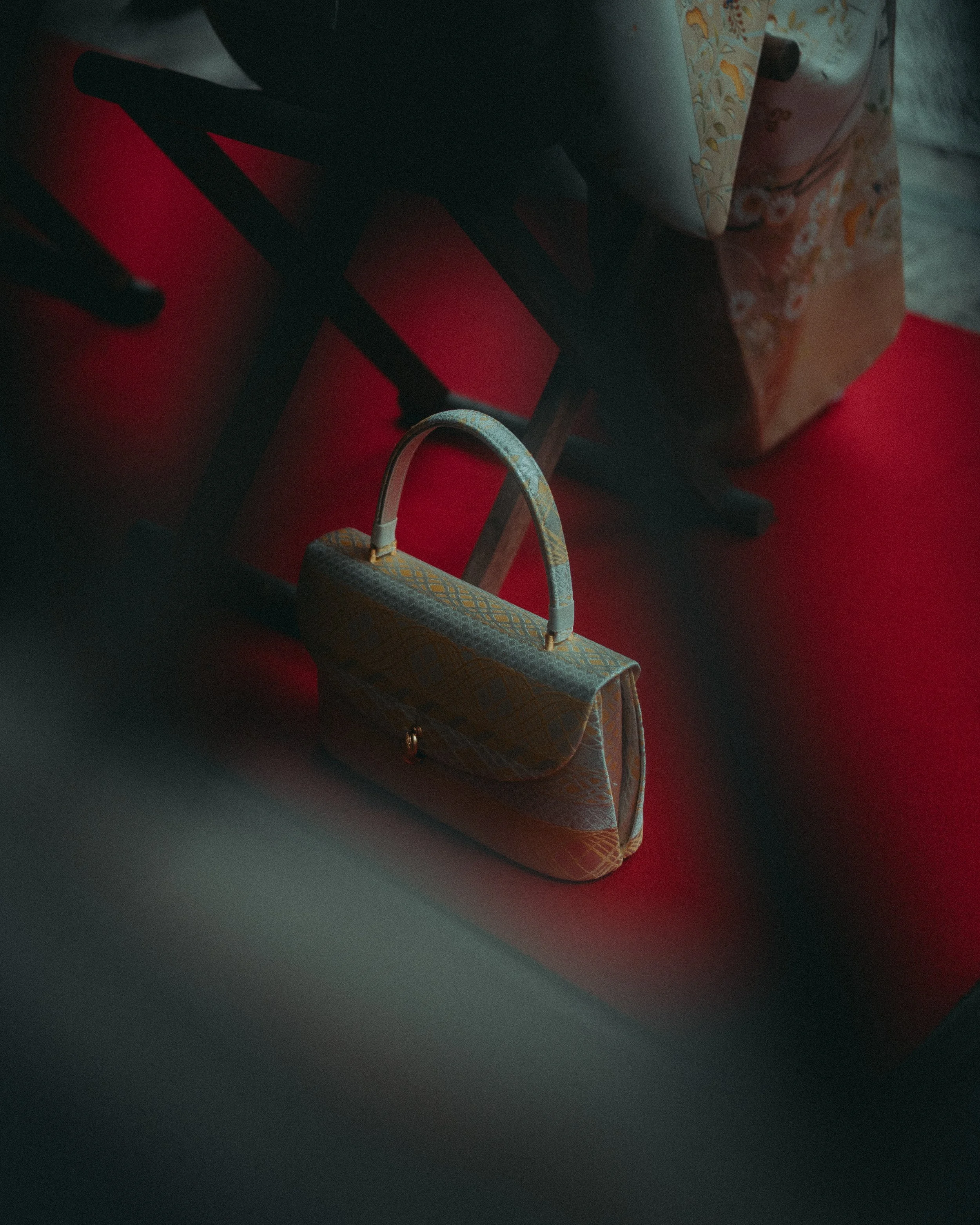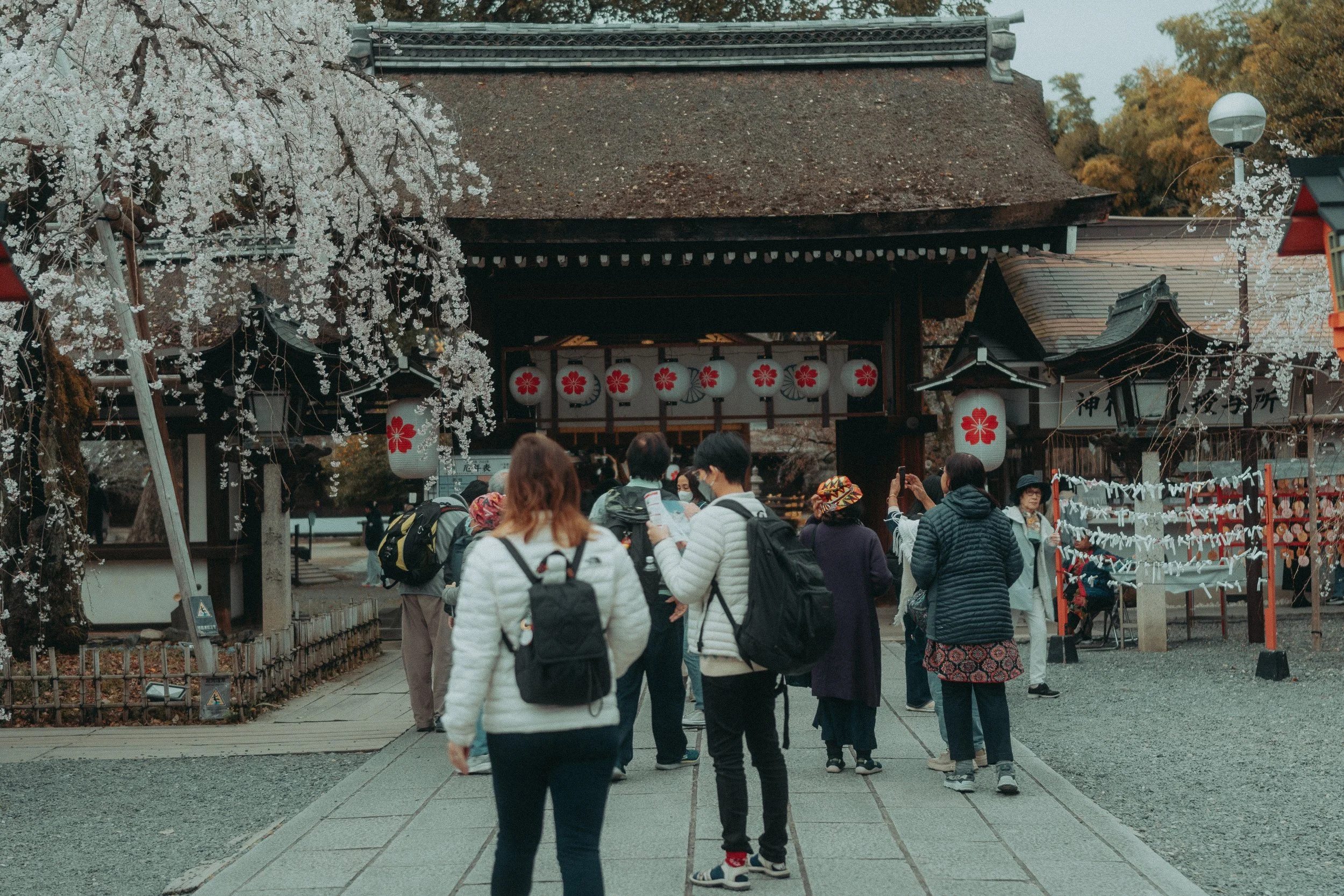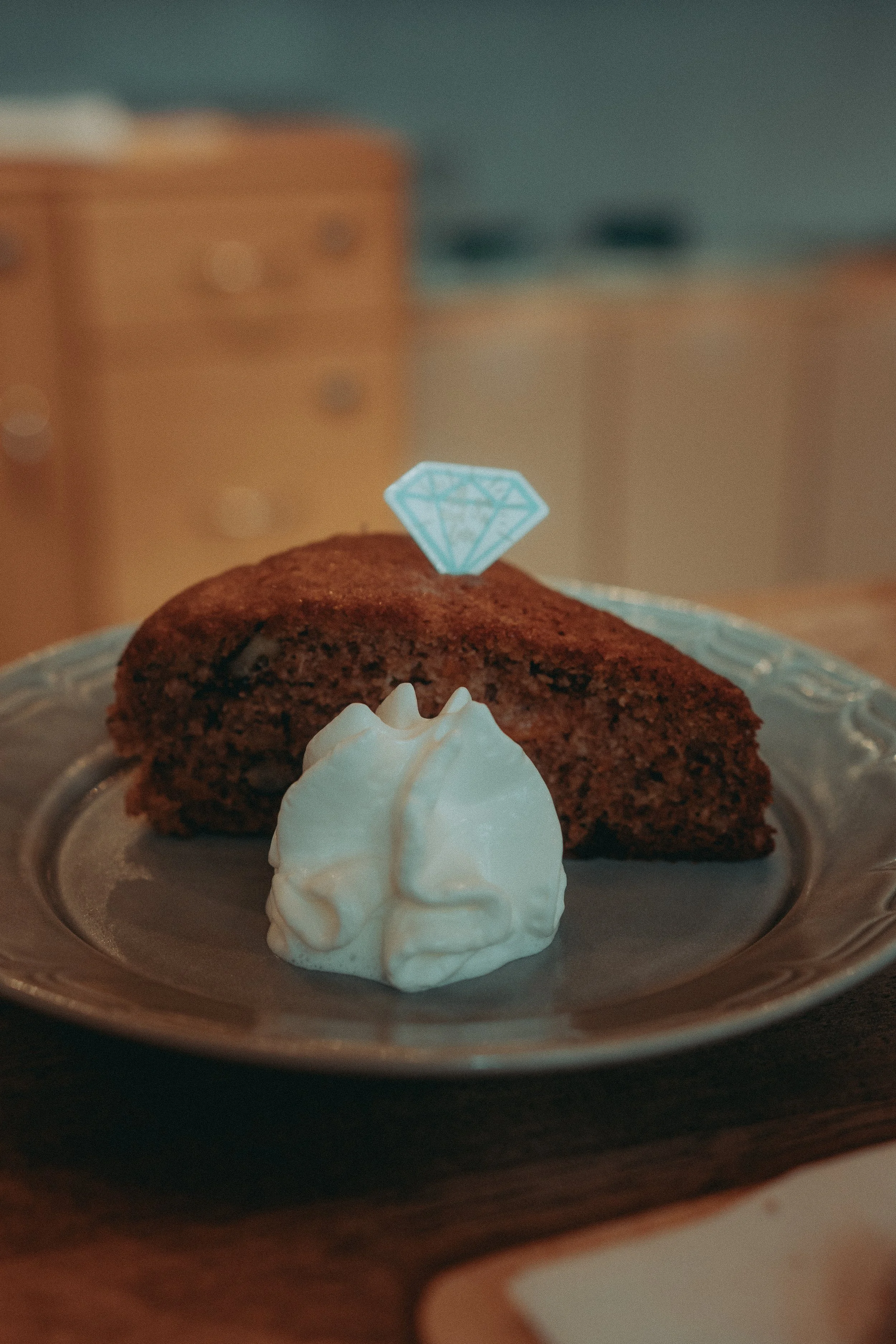The Ultimate Kyoto Travel Guide: Top Things to See, Eat, and Do (2025 edition)
Kyoto. Just saying the name feels like a bow to something ancient. It’s where lantern-lit alleys whisper old stories, temples shimmer in gold, and every season feels like it was designed to make your jaw drop. Out of all the places we explored in Japan, Kyoto has carved the deepest place in our hearts—and after reading this guide, we think it’ll do the same for you.
We didn’t want to rush Kyoto. No checklists. No hit-and-run sightseeing. So we planned it slowly, deliberately—aiming for the peak of cherry blossom season in late March and early April, and planning a second visit for fiery autumn in October. Two weeks in spring gave us time to soak it all in: from serene temple mornings to lantern-lit ramen nights, and yes, a few surprises we’ll never forget. (Stay tuned—this guide will grow after our autumn return.)
We based ourselves first near Nijo Castle at Kyoto Uraraka House, a little guesthouse tucked away on a quiet street, where we felt more like locals than tourists. It’s cozy, affordable, and perfectly placed for wandering on foot. We also stayed, the first time around (check out our previous 21-day Guide in Japan here), a few nights at Hotel Keihan Kyoto Grande, which is right next to Kyoto Station—super convenient if you’re planning day trips to places like Ine or Amanohashidate.
And while Kyoto’s “greatest hits” are absolutely worth the hype—Fushimi Inari at sunrise? Magic. Arashiyama Bamboo Grove in the mist? Unreal—we were also on a mission to peel back the tourist layer and find the places no one talks about. Think: moss-covered temples with no crowds, secret bakeries run by 80-year-old grandmas, indie cafés hidden behind sliding doors, and a garden so peaceful we heard our own thoughts for the first time in days.
This guide is for you if you want more than just temple-hopping. It’s for the wanderers, the slow travelers, the seekers of beauty in unexpected corners. Whether you have 48 hours or two full weeks, this is your all-in, don’t-miss, wander-deeply Kyoto playbook. We’re sharing everything—from top sights to our most treasured hidden gems—so you don’t just see Kyoto, you feel it.
JUMP TO A CATEGORY
How to Get There?
If you've been following along with our adventures, you know Kyoto was next on our list after Matsumoto. It took us about 3.5 hours by train, but Kyoto is also accessible by air through nearby airports as well:
Kansai International Airport (KIX) – About 75–90 min by direct train (our go-to!)
Osaka Itami Airport (ITM) – Closer but more domestic-focused
Chubu Centrair Airport (NGO) – Ideal if you’re flying into Nagoya
If you're coming from Tokyo, the Shinkansen (bullet train) is a super convenient option. Kyoto is one of the most tourist-friendly cities, so getting there is a breeze no matter your choice of transport!
Travel Passes to Know Before You Go
If you’re planning to explore beyond just Kyoto, or you’re building a Kansai-wide itinerary (Osaka, Nara, Kobe, Himeji, etc.), a smart pass will save you money and time figuring out tickets. Here's what we recommend:
Kansai One Pass (for short-term visitors)
Best for: Tourists staying mostly in the Kansai region
Covers: Almost all trains, subways, and buses in Kansai (Kyoto, Osaka, Kobe, Nara)
Bonus: Offers discounts at select attractions!
Where to buy: Kansai airports, major stations like Kyoto or Osaka. You can check all the details here
It’s basically a tourist-friendly version of the ICOCA card (Kansai’s Suica/PASMO). If you’re spending more than a day in Kyoto or Osaka, it’s a must-have.
If you are going to more than one place or using a lot of Shinakanse’s, we recommend you consider the JR Pass!
When to Go?
Kyoto is beautiful year-round, each season offering its own unique charm. Whether you’re drawn to the delicate fall of sakura petals or the golden blaze of maple leaves, Kyoto will meet you where you are—and take your breath away while it’s at it.
Spring (March to May): If you’re after the cherry blossoms, the best time to visit is at the end of March and beginning of April. This is arguably the most popular time to visit, with the cherry blossoms in full bloom and pleasant temperatures. But just be prepared for huge crowds. Kyoto turns into a real-life painting, and the weather is mild, making it an ideal time to explore. However, cherry blossom season can be unpredictable, so it’s always a good idea to check forecasts in advance here. We recommend checking official sakura forecasts and downloading the app “Sakura Navi” (or “Japan Travel by NAVITIME”), which gives live bloom updates and festival info across the city. Total game changer. Check it out here!
Summer (June to August): Summer in Kyoto can be hot and humid, with temperatures often soaring above 30°C (86°F). June also brings the rainy season (tsuyu). Bring a light raincoat or umbrella—it won’t ruin your trip, but it will surprise you. If you’re not a fan of the heat, it’s best to avoid this time, but summer also brings lively festivals like the Gion Matsuri, one of the largest and most famous festivals in Japan, held in July. Explore early mornings or duck into riverside cafés and breezy shrines during the hottest hours. And don’t forget the sunscreen!
Autumn (September to November): Autumn is another fantastic time to visit Kyoto, especially in November when the fall foliage reaches its peak. The weather is cooler and more comfortable, making it ideal for outdoor exploration. Peak foliage tends to be in mid to late November, with some spots peaking into early December. You can always check the forecasts here.
Winter (December to February): Kyoto in winter is serene and less crowded, making it a peaceful time to visit. The city is often blanketed in light snow, especially in January and February. You’ll get major sites nearly to yourself, plus amazing winter food—hot matcha, yudofu (tofu hot pot), and grilled mochi!
Stay Connected: Pocket Wi-Fi is Your Best Friend
Since we were staying for a long time in Japan, reliable internet was non-negotiable. We rented our Pocket Wi-Fi from Japan Wireless, which offers flexible plans for short and long stays. They even deliver it to your hotel or the airport—so convenient that even Sara didn’t need a Plan B (and that’s saying something).
Returning it is as simple as dropping the prepaid envelope into a mailbox at the airport (before security!) on your last day. Easy peasy, even for Vasco, who usually leaves logistical matters to Sara.
Gear Recommendations for Photography in Kyoto
These recommendations are based on the gear we used to capture everything about Kyoto. Our Sony A6700 (cropped sensor) paired with the Sigma 10-18mm f2.8 for wide shots and vlogs, the 35mm f1.4 for portraits and street photography, the 70-200mm f2.8 for wildlife and zoom shots, and the 16mm f1.4 for night and astro photography. We used a Marumi Black Mist 1/4 filter ( this is an equivalent). Our DJI 4K Pro Mini is also a great way to get aerial shots where you have permission to fly (check our Drone flying in Japan blog post here).
Activities We Recommend you Book
If you’re looking for unique experiences, Kyoto has plenty to offer:
Traditional Tea Ceremony Experience: Experience the Japanese tea ceremony in a beautiful setting. A must-do for those wanting to dive deeper into Japanese culture. Book here.
Sagano Train & Hozugawa River Rafting Day Tour: A perfect cherry blossom season activity. Take a scenic train ride and enjoy rafting on the river. Book here.
Kimono rental experience Book here
Traditional Arts Performance at Gion Corner: Book this in advance for a chance to see traditional Japanese arts like tea ceremonies, flower arranging, and more! Book here.
The Ultimate Kyoto Itinerary Guide
Whether you're here for your first visit or returning after a year-long Japan adventure (like us!), Kyoto has layers upon layers to discover. We've divided the best of Kyoto into two sections: Main Attractions (The Basics) and Hidden Gems, including key details like prices, tips, and when to go.
The Essentials of Kyoto
These are the iconic spots you see in every postcard — and for good reason. Despite being popular, they still feel magical with the right timing.
Kiyomizu-dera Temple
Kiyomizu-dera is one of Kyoto’s most iconic temples, known for its large wooden stage that overlooks the city. The temple is dedicated to the Buddhist deity Kannon and is famous for its beautiful views of Kyoto, especially during the spring and autumn seasons.
Admission: ¥400
Vasco’s Photography Tip: Go early morning or at sunset for fewer crowds and incredible lighting. Use the Sigma 10-18mm for wide temple shots and the 35mm for capturing architectural details or street scenes nearby. The Black Mist 1/4 filter adds a dreamy quality to golden hour shots as well.
Ninenzaka and Sannenzaka Slopes Start:
These charming streets are lined with traditional wooden houses and shops selling souvenirs, tea, and local delicacies. They’re a great place to explore if you want to experience Kyoto’s old-world charm. The streets lead to Kiyomizu-dera, making it a perfect stop before or after visiting the temple.
Vasco’s Photography Tip: Use the 35mm f1.4 for street photography and portraits of locals in kimono. Visit early morning or late afternoon for soft directional light and fewer tourists.
Fushimi Inari Taisha
Fushimi Inari Taisha is one of Kyoto’s most famous landmarks, known for its thousands of vibrant red Torii gates that line the paths up the mountain. The hike to the top takes about 2-3 hours, and along the way, you’ll pass smaller shrines and beautiful views of Kyoto. It’s a must-see for anyone visiting Kyoto and is particularly magical at sunrise or sunset when the crowds are thinner.
Admission: Free
Vasco’s Photography Tip: Hike early at sunrise or late after sunset for fewer people and amazing photos. The Sigma 10-18mm captures the tunnel effect of the torii gates beautifully. The 35mm is ideal for isolating single gates or shrine details.
Arashiyama Bamboo Grove
Arashiyama Bamboo Forest is one of Kyoto’s most famous natural attractions. The towering bamboo stalks create a magical atmosphere, and walking through the forest feels like stepping into another world. It’s especially beautiful in the early morning when the crowds are thinner.
Admission: Free
Vasco’s Photography Tip: Arrive before 8am to get photos without the crowds. Use the wide 10-18mm lens for immersive vertical compositions and the Black Mist filter for softening contrast in strong morning light.
Arashiyama Monkey Park Iwatayama
Located on the slopes of Mount Arashiyama, this monkey park is home to hundreds of wild Japanese macaques. You can hike up to the top of the mountain, where you’ll be greeted by the monkeys. It’s a fun experience for animal lovers and offers great views of Kyoto from the top.
Admission: ¥550
Vasco’s Photography Tip: Use the 70-200mm f2.8 for close-ups of the monkeys and get some landscape shots from the summit.
Kimono Forest
The Kimono Forest in Arashiyama is a unique and beautiful spot. The forest is filled with over 600 colorful fabric pillars, each representing a different kimono pattern.
Vasco’s Photography Tip: Great at dusk when the pillars are softly illuminated. Use the 35mm f1.4 for capturing rich colors.
Kinkaku-ji (Golden Pavilion)
Kinkaku-ji, also known as the Golden Pavilion, is one of Kyoto’s most iconic landmarks. The temple is a UNESCO World Heritage Site and is one of the most photographed spots in Kyoto.
Admission: ¥500
Vasco’s Photography Tip: Visit in the late afternoon for glowing light on the pavilion. Use the 70-200mm to zoom in across the reflective pond, or the 10-18mm for wide shots. A polarizing filter can help reduce water glare.
Nijō Castle
A UNESCO World Heritage Site, Nijō Castle is an impressive display of Japanese feudal architecture. You’ll need at least 1.5 hours to fully explore the grounds.
Admission: ¥1,300 (includes Ninomaru Palace)
Vasco’s Photography Tip: Exterior shots with the 10-18mm work well. The 35mm is great for capturing gardens and doorways.
Nidec Kyoto Tower
Kyoto Tower offers stunning panoramic views of the city and surrounding areas. Standing at 131 meters tall, it’s the tallest structure in Kyoto. The observation deck is located on the 10th floor and it’s a great spot for sunset views, and if you’re lucky, you might catch a glimpse of Mount Hiei in the distance.
Admission: ¥900
Vasco’s Photography Tip: Time your visit with sunset if you can. Use the 16mm f1.4 for wide low-light shots. Tripods are not allowed, so lean on rails for stability.
Gion District
Gion is Kyoto’s most famous geisha district, filled with traditional teahouses, lantern-lit streets, and historic architecture. It's one of the best places to catch glimpses of geiko and maiko in full dress, if you are lucky (try to photograph at a distance, they are working so be mindful always).
Admission: Free
Vasco’s Photography Tip: Visit at dusk for moody lighting. The 35mm f1.4 is perfect for capturing portraits and alleyways. Respect privacy and don’t chase geisha.
Extra Activity to consider: Gion Kōbu Kaburenjō
Traditional Arts Performance at Gion Corner: Book this in advance for a chance to see traditional Japanese arts like tea ceremonies, flower arranging, and more! Book here.
Nishiki Market
Known as "Kyoto's Kitchen," Nishiki Market is a bustling street market filled with over 100 shops and stalls selling everything from fresh seafood and pickled vegetables to sweets and traditional Kyoto delicacies. It's an absolute must for foodies like Vasco, who’ll love the wide variety of snacks, including tempura, kyo-tsukemono (Kyoto-style pickles), and the famous matcha sweets. Be sure to try the Nishiki Tamago (Japanese-style omelette) and mochi from the local vendors.
Budget: Expect to spend about ¥500–¥1,000 per snack, but trust us, it’s worth it
Vasco’s Photography Tip: The 35mm f1.4 is ideal for vibrant food shots and market scenes. Set a fast shutter for busy aisles.
Maruyama Park
Maruyama Park is Kyoto’s most famous park for cherry blossom viewing, and it’s a popular spot during the hanami season. In spring, the park is filled with locals and tourists alike, all enjoying picnics under the blooming cherry trees. The park is also home to a large weeping cherry tree, which is illuminated at night during the cherry blossom season, creating a magical atmosphere. If you’re visiting in spring, this is a must-see! The park is free to enter and is a great place to relax after a day of sightseeing.
Admission: Free
Vasco’s Photography Tip: Cherry blossoms are best captured with the 10-18mm for dreamy landscapes, or the 70-200mm for isolating details. Try the 16mm f1.4 for dusk blossoms and light-up events.
Nazen ji
Nanzen-ji is one of the most important Zen Buddhist temples in Kyoto. Located at the foot of the Higashiyama mountains, the temple is known for its impressive gate, beautiful gardens, and historic structures. Don’t miss the Nanzen-ji aqueduct, a stunning stone structure that runs through the temple grounds, adding to the charm of the area.
Admission: ¥600 (main hall), aqueduct area is free
Vasco’s Photography Tip: Use the 10-18mm for dramatic shots of the aqueduct and temple gate. The 35mm works well in the gardens.
Kyoto Starbucks
A traditional-style Starbucks housed in a restored Kyoto townhouse.
Admission: Free (but go early to avoid long queues)
Vasco’s Photography Tip: Great place for lifestyle shots and café vibes. 35mm for interiors; avoid flash. Respect others of course. If you have a kimono rental experience, this place makes for some beautiful shots.
Tōfuku-ji Temple
Tōfuku-ji is one of the oldest and most famous Zen temples in Kyoto. The temple is free to visit, but donations are welcome.
Admission: ¥500
Vasco’s Photography Tip: During autumn it has vibrant reds and oranges. Use the 70-200mm for foliage framing and temple shots.
Yasaka Pagoda
Yasaka Pagoda is a beautiful, historic pagoda located in the heart of Kyoto’s Higashiyama district.
Admission: ¥400 (to enter the pagoda)
Vasco’s Photography Tip: Iconic shots with the 35mm down the street toward the pagoda. Sunset and blue hour have the perfect lighting. Mist filter adds mood.
Kyoto Imperial Palace
The Kyoto Imperial Palace is the former ruling palace of the Emperor of Japan.
Admission: Free (unguided), guided tours available
Vasco’s Photography Tip: 10-18mm captures the scale of the palace grounds. 70-200mm ideal for architectural details.
Kyoto Samurai and Ninja Museum
If you’re a fan of samurai or ninjas, this interactive museum is a fun and educational experience. You can try on samurai armor, learn about the history of the samurai, and even try your hand at ninja activities like throwing shuriken (ninja stars). It’s a great stop for families or anyone interested in Japan’s warrior culture.
Admission: ¥1,900 (basic package). Book tickets in advance during busy seasons
Vasco’s Photography Tip: Use the 35mm for portraits in costume. Low light indoors may benefit from the 16mm f1.4 and a high ISO.
Teramachi Shopping Street
If you’re in the mood for some shopping, Teramachi Street is the place to be. From traditional Japanese goods to modern fashion. It’s a great spot to pick up souvenirs, unique clothing, or enjoy some street food.
Vasco’s Photography Tip: Great for street photography and urban details with the 35mm.
Pontocho Alley
One of Kyoto’s most iconic hanamachi (geisha districts), Pontocho is a narrow, lantern-lit lane running parallel to the Kamogawa River. It’s famous for its atmospheric teahouses, hidden izakayas, and the occasional glimpse of a geiko or maiko in the early evening.
Vasco’s Photography Tip: Perfect for low-light street photography with the 35 mm. You can use the Black Mist filter to soften highlights and enhance the cinematic glow of lanterns and reflections.
Nintendo Museum
For fans of gaming, the Nintendo Museum is a must-visit! This museum showcases the history of Nintendo, from its early days as a playing card company to its rise as one of the world’s most famous video game companies. You will need to apply for tickets through their website, so make sure to plan ahead. You need to have at least one Nintendo account in order to do so and add all the details and Passport details into the drawing. In the end you can specify the number of people you want tickets for and also the day and time you want to visit. If you get accepted, you will receive an email so you can buy the tickets! Have your passport and card details in hand, and then they will ask you to call a number (with no extra costs to you) to confirm your identity and you are set to go! Check our blog post about this Museum here!
Vasco’s Photography Tip:Photography is limited inside, but use the 35mm for building shots and detail close-ups. Avoid flash here as well.
Hidden Gems: Local Secrets and Under-the-radar Places
Discover Kyoto’s quieter treasures—places where peace and authenticity shine.
Nonomiya Shrine Black Torii Gate
This lesser-known shrine is tucked away in the Arashiyama area and features a stunning black Torii gate that stands in contrast to the more common red ones seen throughout Japan. It’s a great place to take a stroll, especially if you want to avoid the crowds at the more famous sites in Kyoto. It’s free to visit and offers a tranquil atmosphere, perfect for a meditative moment.
Admission: Free
Vasco’s Photography Tip: Use the 10–18 mm for wide environmental shots with the gate and bamboo. The 35 mm works well for close-ups of the gate textures. Visit early morning for soft light and serenity.
Bishamondo Temple
The temple is dedicated to Bishamonten, the Buddhist god of war, and is a popular spot for both spiritual seekers and history enthusiasts.
Admission: ¥500–700 (typically ¥500 adult; ¥700 peak season)
Vasco’s Photography Tip: Best time is late March–early April (sakura) or late November (koyo). Use the 70–200 mm to isolate blossoms or building details.
Komyo-in Temple
Komyo-in is a quiet, hidden gem in Kyoto. The temple is a great place to escape the crowds and enjoy some solitude. Its tiny garden and it offers matcha and sweets seasonally.
Admission: Donation-based or free during off-season.
Vasco’s Photography Tip: Use the 35 mm for garden close-ups and the 10–18 mm for village-wide framed shots through the doorway. I do also recommend a wider aperture.
Daihikaku Senkōji Temple
Daihikaku Senkōji is a historic temple located in the Arashiyama area. The temple is known for its beautiful gardens and stunning views of the surrounding mountains.
Admission: ¥400
Vasco’s Photography Tip: Use the 10–18 mm for panoramic shots. You can switch to the 16 mm or 35mm f1.4 for night or low–light.
Taishogun Shopping Street (Ichijo Yokai Street)
This quirky shopping street is known for its unique shops and spooky vibe. The street is lined with shops selling all things related to yokai (Japanese monsters) and other supernatural creatures. It’s a fun place to visit if you’re interested in Japanese folklore and mythology.
Vasco’s Photography Tip: Snap character sculptures shots with the 35 mm for sharp detail or the 10–18 mm for atmospheric wide shots.
Genko-an Temple
Genko-na is a lesser-known temple that offers a quiet, peaceful experience away from the crowds. It’s known for its beautiful gardens and serene atmosphere.
Admission: ¥400 (¥500 during autumn)
Vasco’s Photography Tip: Use the 35 mm at low ISO to capture window views. Also the Black Mist filter softens the harsh light. Indoors, you can use the 16 mm f1.4 for atmospheric shots.
Kyoto International Manga Museum
If you’re a fan of manga, like Sara is, this museum is a must-visit! It houses over 300,000 manga, and the best part is that you can freely read from the shelves while wandering through the museum. The museum also features exhibitions on the history of manga, from its origins to modern-day hits. It’s a fun stop for both manga enthusiasts and those looking to learn more about Japan’s rich comic culture.
Admission: ¥800
Vasco’s Photography Tip: Use the 35 mm for cool shots reading manga. Indoors, the 16 mm f1.4 handles low light quite well. You can’t film here.
Lake Biwa Canal Walk
A scenic, peaceful waterside path near Keage and Nanzen-ji, lined with cherry blossoms during spring season.
Vasco’s Photography Tip: Use 10–18 mm for reflections and composition. The Black Mist filter makes for perfect dawn/dusk shots.
Kyoto Garden Palace
Located near the Kyoto Imperial Palace, the Kyoto Garden Palace is a beautiful and lesser-known site that showcases traditional Japanese landscaping. With koi-filled ponds, stunning stone lanterns, it’s a peaceful place for reflection and photography. Entry is free, but donations are welcome, and it’s a wonderful spot to enjoy a quiet afternoon.
Admission: Free
Vasco’s Photography Tip: The 35 mm with wide aperture frames does well for things like koi or lanterns, while the 10–18 mm captures the full garden layout pretty well.
Byōdō-ji (Inaba-dō) Temple
Byōdō-ji is a small but beautiful temple located in the Uji area—less crowded, but full of grace.
Admission: ~¥600
Vasco’s Photography Tip: I suggest you use 70–200 mm, the best is for sure the early morning since it gives your photos a beautiful soft light.
Shinkyogoku Shopping Street Union
Shinkyogoku Shopping Street is a lively shopping district filled with shops selling everything from clothing and accessories to souvenirs and snacks. It’s a fun place to wander, and you’ll find plenty of street food vendors offering tasty treats like takoyaki (octopus balls) and taiyaki (fish-shaped pastries filled with red bean paste, one of Sara’s favorites!).
Vasco’s Photography Tip: You can use 35 mm for dynamic street shots and neon signage at night.
Pontocho Park
Pontocho Park is a small but charming park located near the famous Pontocho Alley, known for its traditional tea houses and geisha culture.
Vasco’s Photography Tip: Nighttime scene-setting with the 10–18 mm is perfect, plus you can use the Black Mist for soft lantern glow and reflections.
Go-ō Shrine
Go-ō Shrine is a small but charming shrine located in the heart of Kyoto. The shrine is dedicated to the deity of marriage and love, making it a popular spot for couples.
Vasco’s Photography Tip: 35 mm is perfect for detail shots here.
Daihōonji (Senbon Shakadō) Temple
Daihōonji is a beautiful temple located in the northern part of Kyoto, known for its stunning gardens and serene atmosphere. The temple is famous for its unique Shakadō (path of the sacred) that leads to the temple’s main hall.
Admission: ~¥500
Vasco’s Photography Tip: Use the 10–18 mm to capture lantern-lined avenues. ND filter allows long exposures for light trails or soft ambience as well, which allows for some cool photos.
Hirano Shrine
Hirano Shrine is a small but charming shrine in Kyoto, known for its beautiful cherry blossoms. It’s one of the best places to see cherry blossoms in the city, especially during the early spring season. The shrine is peaceful and less crowded, making it a perfect spot for a quiet walk.
Admission: Free, but during cherry blossom season they normally charge for entry
Vasco’s Photography Tip: Use 16 mm with wide aperture to capture the sakura!
Yuki Shrine
Yuki Shrine is located in the northern part of Kyoto and is dedicated to the deity of rain. The shrine itself is quite simple but charming, and it’s a great place for a short stop to escape the crowds.
Admission: Free
Vasco’s Photography Tip: The 35 mm with wider aperture for intimate shrine details is great here. Add the Black Mist filter especially after rain :)
Kitano Tenmangu
One of Kyoto’s most important Shinto shrines, dedicated to Sugawara no Michizane, the deity of learning. A plum blossom venue in February and for cherry blossom in March. It’s a very beautiful and huge shrine, normally with much less people.
Admission: ¥500 for main hall (festival charges vary)
Vasco’s Photography Tip: Bring the 70-200mm for close-ups. The 35mm f1.4 is great for portraits with the shrine’s architecture. Use the Black Mist filter is perfect especially in backlit blossoms or glowing lanterns during evening festivals.
Keage Park
A lovely park blending hillside greenery and open canal views.
Vasco’s Photography Tip: Wide-angle 10–18 mm for the main canal arcs. I would say the afternoon light is probably the best!
Chion-in Temple
One of Kyoto’s grandest temple complexes, with a massive gate, beautiful ponds, and spiritual atmosphere.
Admission: ¥600 (main hall)
Vasco’s Photography Tip: Use 70–200 mm to zoom into the gate details. For wide scenes, use 10–18 mm at dawn or dusk for dramatic lighting.
Day Tours from Kyoto we recommend
While Kyoto is full of wonders, some of the most unforgettable experiences are just outside the city. Here are our favorite day trips — perfect for those with extra time and want to explore beyond Kyoto itself!
Amanohashidate & Ine Funaya Day Trip
We took a tour that included the main stops and scenic spots. The tour costs around ¥8,000–¥10,000 per person, but it’s well worth it for the beautiful landscapes and cultural experiences.
Amanohashidate
If you’re looking for a day trip outside of Kyoto, we highly recommend heading to Amanohashidate, a scenic sandbar that stretches across Miyazu Bay. It’s often considered one of Japan’s three scenic views. The area is famous for its panoramic views, especially from the viewpoint on Mt. Monju, which offers postcard-perfect views (especially if you try the famous "upside-down" viewing pose through your legs!). You can get there by train from Kyoto to Amanohashidate Station (about 2.5 hrs one way).
Main points of interest you can’t miss:
Amanohashidate View Land (South Side Viewpoint)
Accessed by chairlift or monorail.
Includes a small amusement park.
Kasamatsu Park (North Side Viewpoint)
Reachable via cable car or hiking trail from the north side.
Home to Isoshimizu Spring, one of Japan’s top 100 water sources.
Motoise Kono Shrine
Historically significant and spiritually powerful shrine near Kasamatsu Park.
Chion-ji Temple
Known for its large pine tree and good-luck omikuji paper fans.
The Sandbar Itself
You can walk or rent a bicycle (20–30 min walk, 10–15 min bike ride).
Where to Eat:
Café du Pin (Amanohashidate): Cozy spot near the viewpoint, great for coffee and sweets.
Ine
Ine Funaya, is a charming fishing village, and is known for its traditional Funaya boathouses that line the water. It’s just 30 minutes from Amanohashidate and it feels like stepping into a different time. Take a boat tour of the bay for the full experience, or simply wander the town and enjoy the serenity.
Main points of interest you can’t miss:
Funaya (Boathouses)
The town has about 230 historic boathouses lining Ine Bay.
Many are still actively used; some now host cafés, inns, or museums.
Ine Bay Boat Cruise
Take a guided tour around the bay to view the funaya from the water.
Fish often swim alongside the boat, and you may get to feed them. But the best part is feeding the seagulls. You can buy some snacks for them before entering the boat and we promise it’s an experience you won’t forget.
Ine Tourism Information Center
Grab maps, rent e-bikes, or get walking route suggestions.
Where to Eat:
Hakuzu Coffee Stand (Ine): Waterfront seating and smooth coffee — ideal for a midday break.
Kurama & Kifune Sanctuary Day Tour
A bit off the beaten path, Mount Kurama offers both natural beauty and spiritual significance. The hike up the mountain is about 2-3 hours and offers stunning views of Kyoto and the surrounding mountains.
From Mount Kurama you can get to the Kifune Sanctuary, which is dedicated to the deity of water. The shrine is famous for its red lanterns that line the path leading up to it. The surrounding area is also known for its kifune (water) cuisine, including kawadoko dining, where you can enjoy meals on platforms set over the flowing river.
Main points of interest you can’t miss:
Kurama-dera
Kurama-dera is a temple located at the top of Mount Kurama. The temple is dedicated to the deity of healing and is said to have been founded in the 8th century.
Yuki Shrine
Often overlooked, this small shrine is peaceful and steeped in local lore — worth a quick detour as you move between the two valleys.
Maoden
A hidden shrine en route to Kurama-dera, connected to tengu mythology (Japanese mountain spirits). If you're into folklore or photography, this is a must.
Where to Eat in Kurama/Kifune:
Kifune Kyoshiyo 御土産処 京紫陽: A charming local spot which delicious food and beef bowls. Also sells small local souvenirs.
Hirobun (seasonal): The restaurant where noodles run through bamboo sticks! It’s a fun and unique experience, come here for the famous nagashi somen (summer only). Reservations are recommended.
Nara Day Trip (Classic)
Just under an hour from Kyoto, Nara offers a perfect mix of history, nature, and adorable wildlife. It’s ideal for a first-time visitor.
We've sprinkled our top picks throughout the detailed 21-day Japan itinerary—including suggestions like Todai‑ji, Nara Park, Kasuga Taisha, Isuien, and more—so be sure to check it out for more.
We're also hard at work on a comprehensive Nara guide, set to release soon. It’ll dive deeper into logistics, hidden gems, and seasonal food experiences to help you plan the perfect day trip from Kyoto!
But overall these are the basics you need to consider when in Nara:
Todai-ji Temple – Home to Japan’s largest bronze Buddha
Nara Park – Hundreds of free-roaming, bowing deer
Kasuga Taisha – A serene forest shrine with thousands of lanterns
Isuien Garden – A beautifully preserved example of Japanese garden design
Where to Eat in Kyoto?
Kyoto is a food lover’s paradise, and we truly ate our way through the city. From street bites to amazing restaurants, here are some of our absolute favorite spots — each one offering something unique.
Cafes & Sweet Spots
Karasuma Oike: A cozy, design-forward cafe with a relaxed atmosphere — ideal for working or unwinding. They serve excellent coffee and beautiful matcha desserts, plus a small in-house bookstore adds to the charm.
Cafe Bibliotic Hello!: A cozy cafe with a unique vibe, perfect for a relaxing afternoon. Try their matcha desserts!
% ARABICA Kyoto Higashiyama: Their matcha latte is one of the best in the city. A stylish coffee shop that serves some of the best coffee in Kyoto.
Kaeru Coffee: A quiet hidden gem with great coffee and Japanese-style desserts. Excellent for a peaceful pit stop during a busy sightseeing day.
Castella do Paulo: For a taste of Portugal in Japan, this spot serves up authentic Castella sponge cake based on a 400-year-old recipe. Moist, fluffy, and just the right amount of sweet.
Meaty Musts & Comfort Food
Tonkatsu Buta-Gorilla (Shinkyogoku Rokkaku): For crispy, tender tonkatsu (breaded pork cutlet), this place is a winner. Don’t miss their signature dish with a side of rice and miso soup.
Gyukatsu Kyoto Katsugyu (Fushimi-Inari): A must-try for beef lovers! This place specializes in gyukatsu (breaded beef cutlets) served with rice and miso soup.
Kyo no Onikudokoro Hiro: Famous for its beef sushi and other meat dishes. A meat lover’s dream. Specialties include Kyoto-style beef sushi, steak, and grilled skewers. Perfect for a more upscale yet cozy dinner.
Nesshinya: A great spot for burgers, recommended for a hearty meal. One of our favorite burger joints in Kyoto. Ideal for a Western-style comfort meal.
Torito Kawaramachi Sanjo: A yakitori and skewer-focused izakaya, perfect for a lively night out. The charcoal-grilled chicken and seasonal specials are especially good with a cold beer.
Seafood & Sushi Lovers
Daiki Suisan Kaiten-Sushi (Kawaramachi Sanjo): If you’re a sushi fan, this conveyor-belt sushi spot offers fresh and affordable sushi.
Higashiyama Sanjo: Their sashimi, tempura, and fried chicken are top-notch. Great for sampling a variety of dishes with drinks.
Unique Local Experiences
Kichi Kichi Omurice: Known for its fluffy and creamy omelette rice, this place is a Kyoto must. Reservations recommended!
Miki Keiran: A must-try for Tamagoyaki (Japanese omelet) lovers. Their version is rich with dashi, giving it a deep umami flavor. Great grab-and-go snack.
Hanayori Kiyoe: Known for croquettes and deep-fried goodies, ideal for snacking while exploring the Nishiki market. Grab one of everything!
Meat & Delica: Specializes in premium beef bites like wagyu skewers and croquette-style meat patties. Definitely on the pricier side, but great!
Cute, Themed & Cultural Eats
Arashiyama Miffy Sakura Kitchen: A cute spot for lunch, especially if you're a fan of Miffy! They serve delicious dishes with a side of cuteness.
Kirakuan Okamoto Sanneizaka: Cozy little spot known for its Tang Yang Chicken (crispy fried chicken) and delicious potato croquettes. Great value and authentic feel.
Super Jankara Kawaramachi Honten Premium: For a fun twist on ramen, this place serves up delicious bowls with all the toppings you could dream of.
Kyoto is a city that seamlessly blends the old and the new, offering something for every traveler. Whether you’re marveling at centuries-old temples, strolling through picturesque bamboo forests, or indulging in mouthwatering local cuisine, Kyoto will leave you with memories to cherish for a lifetime. Each season brings its unique charm, from the vibrant cherry blossoms of spring to the fiery foliage of autumn, the lush greenery of summer, and the serene snow-covered landscapes of winter.
To see more of our adventures and get inspired for your own trips, make sure to follow us on all our social media channels. We share exclusive videos, behind-the-scenes glimpses, and tips from our travels to Kyoto and beyond. Don’t miss out—join our community and start planning your next unforgettable journey today!
























